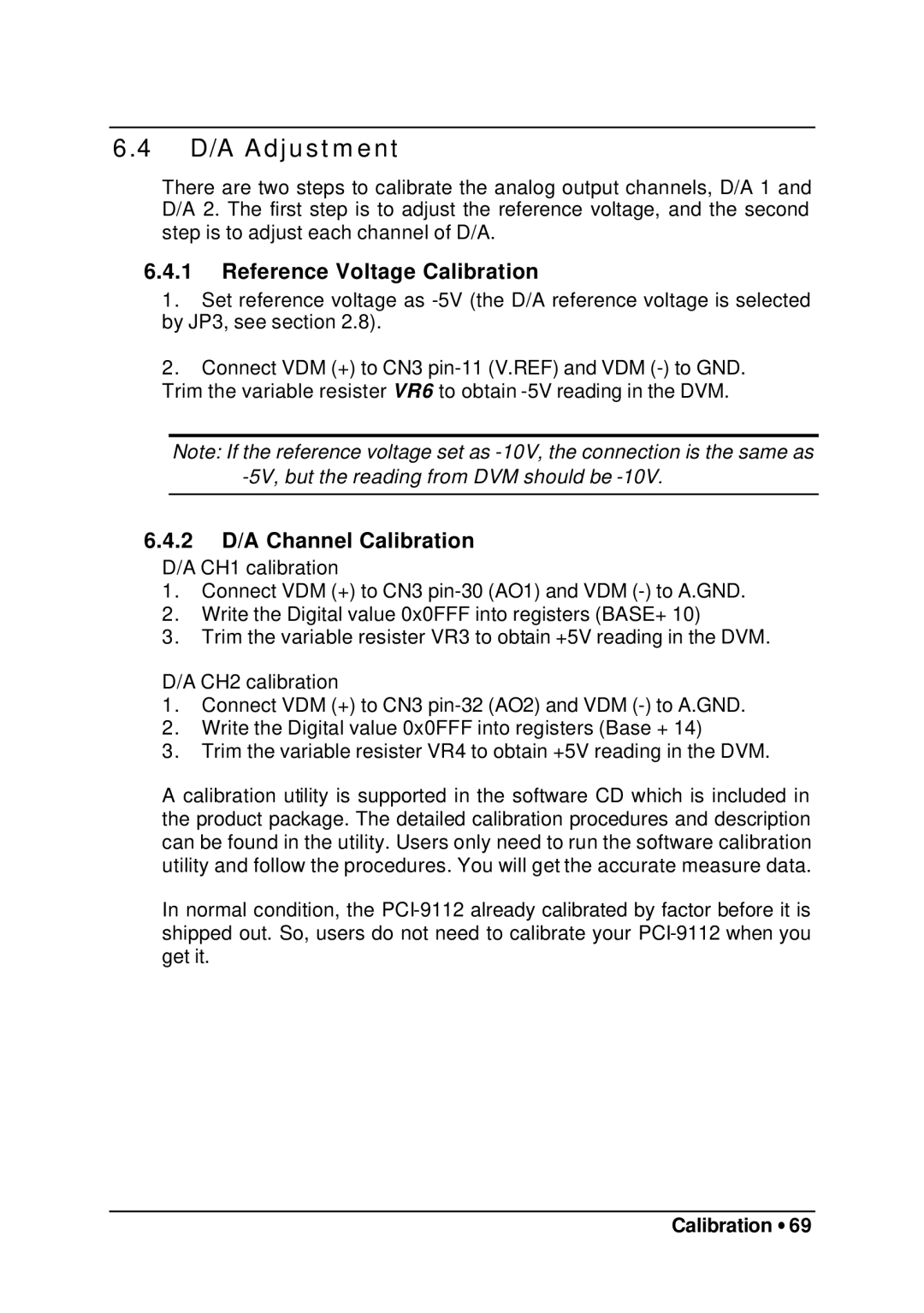
6.4D/A Adjustment
There are two steps to calibrate the analog output channels, D/A 1 and D/A 2. The first step is to adjust the reference voltage, and the second step is to adjust each channel of D/A.
6.4.1Reference Voltage Calibration
1.Set reference voltage as
2.Connect VDM (+) to CN3
Trim the variable resister VR6 to obtain
Note: If the reference voltage set as
6.4.2D/A Channel Calibration
D/A CH1 calibration
1.Connect VDM (+) to CN3
2.Write the Digital value 0x0FFF into registers (BASE+ 10)
3.Trim the variable resister VR3 to obtain +5V reading in the DVM.
D/A CH2 calibration
1.Connect VDM (+) to CN3
2.Write the Digital value 0x0FFF into registers (Base + 14)
3.Trim the variable resister VR4 to obtain +5V reading in the DVM.
A calibration utility is supported in the software CD which is included in the product package. The detailed calibration procedures and description can be found in the utility. Users only need to run the software calibration utility and follow the procedures. You will get the accurate measure data.
In normal condition, the
